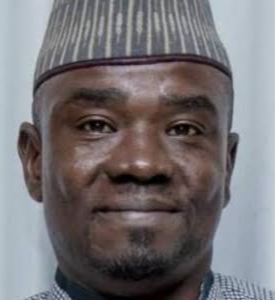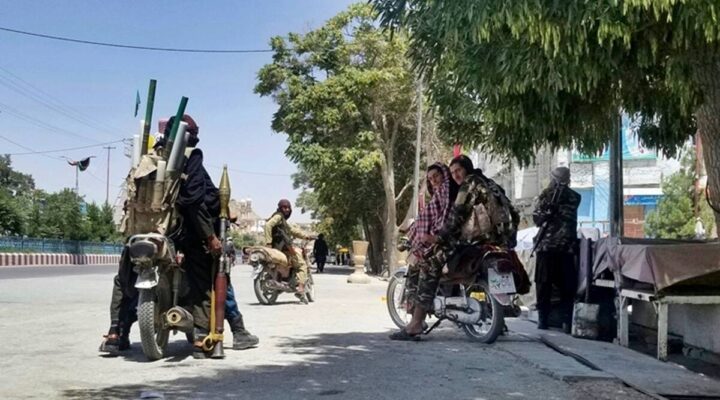After the presentation of my book on Crisis Communication Strategies last year, Abdullahi O. Haruna breezed into my office and announced his forthcoming book too.
Popularly known as Haruspice on social media, Haruna describes himself as a ‘Proud Buharideen’ and an unapologetic Buharist. We have had very several private conversations on the socio-political, as well as economic developments of Nigeria.
From the onset, Haruna has been a fanatical supporter of General Muhammadu Buhari, even before the 2015 elections, after which he became President.
In his characteristic writing style, Haruna has a unique way of weaving together pungent, punchy and persuasive narratives, all delivered with a peculiar choice of words to convey his meaning. And, as a professional communicator, he remains focused on projecting, defending, and protecting the person of the president, sometimes at great risk to him, as a social media influencer.
I could therefore easily second-guess the theme of the book, particularly on the basis of some of our conversations and engagements on national issues.
Advertisement
“The title of my book is ‘The Buhari in Us!’”, he quickly but wittily interjected into my thought.
Although I was not the least surprised by the title of Haruspice’s proposed book, yet I found in it an interesting and amusing metaphor. In our private conversations, I had expressed my misgivings, following the emergence of the Buhari administration in 2015. I then raised concerns over the persecution of opposition politicians, some of who were arraigned before courts for financing elections, while a number of the members of the new ruling party – some of who also deployed public funds to prosecuting the elections – were rewarded with juicy government patronage and appointments.
I was also bothered by the significant imbalances in federal appointments, in which public organisations and agencies in a particular sector were manned by people from specific geopolitical zones, coupled by the additional burden of the sector being one that was facing monumental challenges.
Advertisement
The issue of the swelling concerns around insecurity in the country, alongside arbitrary detentions and the government’s disobedience of court orders gradually became matters of deepening apprehension.
“Sir, ‘the Buhari in Us is’ would answer some of the issues we discussed and allay all your fears….”, Haruspice once again reassuringly interjected into, like a mind reader.
A few months later, the 112-page book, published by Entourage Publishing Limited, was released in a timely fashion that coincided with a period of the national blaming of President Buhari for a number of societal challenges.
In the Foreword to the book, Vice President Yemi Osinbajo writes that, “The Buhari in Us which is a series of short articles written in free-flowing prose, with some occasional interludes of poetic expressions, captures the thoughts and summations of the writer about the man called Muhammadu Buhari.”
Advertisement
Even though critics may disagree with some of his views, Haruspice delivers his message in excellent prose, marshaling convincing arguments, which are incisive and occasionally laced with political rhetoric. He’s is probably the best collection of hagiographical writings on President Buhari.
Nevertheless, after reading the book, I realised that some of his narratives fit into the Image Repair (Restoration) Theory (IRT) propounded in Crisis Communication, as a sub-speciality of the public relations profession, and which is designed to protect and defend an individual or organisation facing reputational challenges.
The image repair theory (IRT), recommended by Professor William Benoit of the University of Missouri, identifies five general approaches to responding to accusations or suspicions. These are Denial, Evading Responsibility, Reducing Offensiveness, Corrective Action, and Mortification.
One of Haruna’s repeated communication strategies in defending the reputation of the President is the utilisation of the denial approach, which is either to refute any wrongdoing in an outright manner or to project a one-sided argument as fact, by negating the possibility of other sides to such argument. For instance, he writes that, “a former president’s timidity allowed Boko Haram (to) capture 23 Local Government Areas,” but refused to add that almost all of these local government areas were subsequently recovered by the same administration before the election that brought Buhari to power. There are many times when his arguments and the damages they seek to do are erected on the fallacy of the single story.
Advertisement
Similarly, in another chapter he mentions that President Buhari hosted some of his ardent supporters (Buharists) to a breakfast in the State House and that “these young people defied insult(s), malice and psychological torture to stand by him without …any monetary motivation.” Surprisingly, in another section of the book, Haruspice accuses some of these Buharists, saying that, “If you can’t support PMB to succeed, please denounce your earlier support. The battle for restoration of Nigeria is not for (the) faint-heart(ed), it is for real patriots.” While initially claiming that the support of the Buharists was total and not dependent on monetary or other forms of inducement, the writer yet rails against this same group in a bitter manner and questions their purported loyalty, without supplying the context for the change in behaviour.
In also utilising the evasion of responsibility approach, which shifts blame and provides excuses for the evolution of issues, Haruna tackles those who were criticising President Buhari for choosing to seek remedy to his medical conditions in a foreign hospital by saying that, “For 16 years you (critics) endured the building of no single world class hospital by OBJ, Yar’Adua and Jonathan but you are angry that in three years Buhari didn’t build hospitals across the federation. Being bias(ed) is also corruption.”
Advertisement
Similarly, when members of the opposition were accusing the Buhari administration of being too slow in taking action on national issues, to this Haruspice retorted that, “Nigeria would have become a global reference in economic growth, political strength, religious reference if not for the way things were badly managed in the past.”
There is also a section on “Buhari’s Certificate of Integrity”, where he writes that, “even those who didn’t graduate properly are saying Buhari has no WAEC certificate.” Meanwhile, in that chapter the names of former Presidents Ibrahim Babangida and Goodluck Jonathan were conspicuously cited.
Advertisement
In taking on the Reducing Offensiveness approach, which is a strategy of attempting a balance by first admitting the existence of problems, and then revealing the solutions that were proffered to these concerns, Haruna titles one of the chapters in the book as, “May Buhari Fail in Politics and Get it Right in Governance.” The reason for this chapter is quite obvious. In another chapter titled, “How not to Change a Government,” Haruna writes that, “You don’t change a government with hate and malice; you change a government with tact and intelligence.”
Another strategy in IRT theory deployed by Haruna, in the reputation building effort of his book, is the Corrective Action Approach which seeks to resolve a problem by promising to do the right things necessary for making this happen. In the chapter titled, “Getting Nigeria out of the Miry Clay,” Haruspice first admits that, “There is no denying the obvious that things are hard and families have been experiencing the most difficult time of existence; people are finding it hard to feed and pay the school fees.” He then quickly concludes that, “This is unfortunate, but we do hope that quick win solutions come to our ways, soon.”
Advertisement
In the Buhari In Us, Haruspice attempts a bit of political clairvoyance of his own. In the section, “Buhari and the Yorubas”, after praising and appeasing one of the APC leaders, Chief Bola Tinubu, Haruspice writes that, “With a Buhari’s candidature in 2019, all would be set for an Osinbajo to succeed his boss…. It’s going to be difficult to deny him the Yoruba representation…. The candidacy of Yemi Osinbajo in 2023 will sell like a virgin bride.”
The Mortification as the last approach in the IRT theory of Crisis Communication is the deployment of a strategy of contrition, which could involve a heart-felt confession, as well as a persuasive apology over an issue or incident of grave import for a community or nation. In this mode, evident in “Righting the Wrongs of Yesterday”, Haruna explains the circumstances of the posthumous honours bestowed on the late Chief MKO Abiola, more than 20 years, after his widely proclaimed victory at the presidential election of June 12, 1993, almost as a way of drawing the audience into an emotional acknowledgement of the restorative purpose of the Buhari administration in healing deep national wounds.
Also, in writing “Why Buhari Can’t Fail”, Haruna declares that the President has no reason to fail because this would be really bad for his image, convictions and would hence damage what he projects as Buhari’s impeccable brand. He says that, “When the body is hungry, the mind becomes weak, forlorn and despondent. What we have now is the realisation that the government is doing all it can to make things right.”
In the book, Haruspice doesn’t only eulogise President Buhari, he also speaks truth to power on some national challenges. In his “Open Letter to the President” in the book, Haruspice laments the deprecating issues of insecurity in the country, noting that, “Killers are having field days, maiming and killing at will… Leadership is nothing if the people are not secured. You can do it, Mr. President, provide more leadership in this regard.”
Yushau A. Shuaib is the author of “An Encounter with the Spymaster” and “Crisis Communication Strategies”
www.YAShuaib.com
Views expressed by contributors are strictly personal and not of TheCable.
Add a comment






